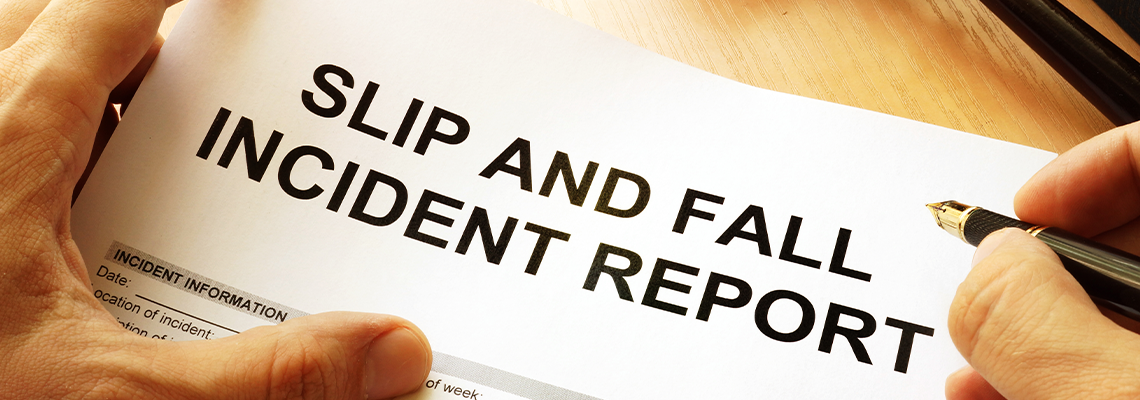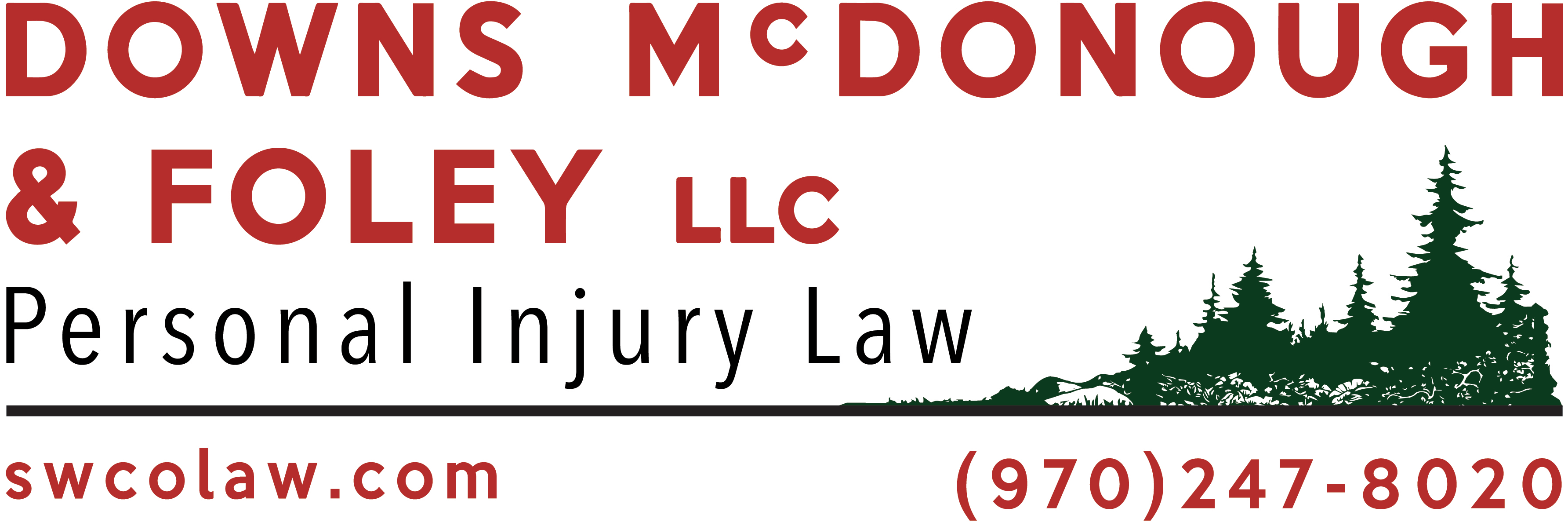
How to Establish Fault in a Slip and Fall Accident on Private Property
Proving who’s responsible after a fall isn’t just about what happened in a single moment. The goal is simple: create a record that’s easy to follow and strong enough for negotiations or court without adding stress during recovery.
That record starts right away and grows as you collect photos, witness details, and medical notes. As each piece comes in, it should point in the same direction so you can show how to establish fault in a slip and fall accident on private property. With that throughline in mind, the sections below walk you from first steps to litigation readiness, one careful move at a time.
At Downs McDonough & Foley, LLC, we help families and individuals build clear, practical proof that connects property conditions to injuries. Located in Durango, Colorado, our firm serves communities across Pagosa Springs, Cortez, and the Four Corners region.
How Fault Works on Private Property
Private property owners owe visitors a reasonable duty of care, but the exact duty depends on why you were there and what the owner knew or should’ve known. If a hazard existed long enough that a routine inspection would’ve found it, fault begins to take shape. The same is true when owners knew about a recurring problem but didn’t fix it or warn about it.
Those ideas turn into proof once you tie timing, inspections, and warnings to the specific place where you fell. When you’re focused on how to establish fault in a slip and fall accident on private property, think about duration, visibility, and what simple steps would’ve reduced the risk. That’s how general duties become concrete mistakes you can show with documents.
Building a Record From Day One
Early action helps lock down details before they fade. Early action helps lock down details before they fade and keeps your case moving in the right direction. To build a foundation for how to establish fault in a slip and fall accident on private property, focus the first week on sources that capture the scene and identify who witnessed it:
Incident and scene photos: Wide shots, close-ups, and angles that show lighting, warning signs, and the exact spot of the fall create context you can’t recreate later.
Witness names and statements: Independent shoppers, neighbors, or workers can describe what was on the floor, how long it was there, and whether staff walked by without addressing it.
Maintenance and inspection records: Sweep logs, work orders, and vendor schedules reveal whether regular checks were done and if recurring issues went unresolved.
Video and access data: Door cameras, hallway footage, and access logs can place people and hazards in time, building a timeline that reduces guesswork.
Footwear and clothing preservation: Keeping what you wore helps address claims that soles or attire caused the fall rather than the hazardous condition.
Medical documentation and timing: Prompt evaluation links symptoms to the event, and follow-up notes track how injuries affected work and daily life.
Once those materials are secured, organize them by time and topic so they tell a single story. That structure will make it easier to demonstrate how to establish fault in a slip and fall accident on private property when you talk with insurers or prepare filings.
Connecting Duty Breach and Causation
Liability hinges on three factors: the owner’s duty, how their actions fell short, and how that failure led to the incident. Begin by determining the inspection or warning measures a diligent owner would have taken in that situation. Then, compare those standards to logs, video footage, and witness statements from the relevant timeframe.
As you line them up, be concrete. “No cone at the entry during a snowstorm” or “mopped aisle without signage during store rush” says more than a broad claim. This is where you’ll naturally repeat how to establish fault in a slip and fall accident on private property, because each proof point answers that exact question with time-stamped evidence.
Practical Notice and Timing Proof
Notice—what was known or should’ve been known—often decides fault. Your aim is to show that the hazard existed long enough, was reported, or recurred in a way that called for action. That’s why timelines matter so much, especially when owners claim the danger appeared moments before the fall.
To maintain a precise timeline, link specific moments to specific evidence. A shopper’s text, a camera frame, and a sweep log entry can together highlight a 20-minute gap without inspection. Pinpointing the timeline this way bolsters arguments for establishing fault in a slip-and-fall incident on private property.
Insurance Communications That Protect Your Case
Insurers move quickly with questions and forms, and it’s tempting to answer everything immediately. Before you do, confirm what you’ve preserved and what you still need. Share enough to keep talks productive, but avoid characterizations that go beyond documents, especially early assessments of fault or medical outcomes.
When you’re ready to present, keep it verifiable. Short summaries with labeled exhibits beat long narratives every time. That approach keeps the conversation centered on how to establish fault in a slip and fall accident on private property, not on speculation or unclear recollections.
Anticipating Comparative Fault Arguments
Property owners often say the hazard was obvious, that you were distracted, or that footwear was the real cause. Plan for those talking points. Lighting measurements and photos can show why a spill wasn’t visible. Layout images and display angles can explain why attention was naturally drawn away from the floor. Preserved shoes and tread photos can rebut footwear claims.
The goal isn’t to argue for perfection; it’s to show you acted reasonably in real conditions. When you answer anticipated defenses with documents instead of opinions, you make it easier to show how to establish fault in a slip and fall accident on private property without getting bogged down in side issues.
Rental Properties and Shared Spaces
Fault questions can get trickier when landlords, tenants, and homeowner associations share duties. The lease or bylaws may assign responsibility for inspections, repairs, and warnings for entries, sidewalks, or common areas. Pull those documents as early as you can so you’re not guessing about responsibilities.
Then match what the papers say to what actually happened. If the lease puts snow removal on the landlord, but the video shows none before opening hours, you’re closer to showing how to establish fault in a slip and fall accident on private property. If the tenant promised to place mats during deliveries and didn’t, that points the same way.
Using Lists to Keep Discovery Focused
Discovery can sprawl, so it helps to target requests around the conditions you’ve already documented. With your initial proof organized, use discovery to fill gaps rather than reopen settled issues. Targeted requests get usable records faster and keep the work centered on establishing fault in a slip and fall accident on private property:
Recurring condition evidence: Work orders, complaint logs, and emails about repeat leaks or icy spots show problems the owner knew about and didn’t fix.
Inspection procedures and staffing: Written schedules, shift rosters, and checklists reveal whether inspections matched traffic levels and weather conditions.
Warning and cleanup materials: Policies on cones, mats, and mopping help test whether simple, practical steps were taken when conditions called for them.
Incident responses and follow-up: Reports, photos taken by staff, and communications after the fall show what the owner did once the hazard was obvious.
After you receive these records, plug them back into your timeline so each page has a place and purpose. That’s how you keep the case moving and keep focus on how to establish fault in a slip and fall accident on private property.
When Litigation Becomes the Next Step
Not every case settles early, and that’s okay. If talks stall, the file you’ve built becomes your blueprint for litigation. Chronologies, demonstratives, and clean exhibit lists help a judge or jury follow the story without confusion. Keep witnesses focused on one or two points each, and use visuals that make distances, lighting, and sightlines easy to understand.
Trial preparation isn’t a new project; it’s the same story told with more structure. If you’ve stayed disciplined, you’ll already have what you need to show how to establish fault in a slip and fall accident on private property. The difference is presentation, not substance.
Contact Us Today
If you’re working through how to establish fault in a slip and fall accident on private property in Colorado, we at Downs McDonough & Foley, LLC can help you plan the next steps and build a clear record. Based in Durango, Colorado, we also serve clients in surrounding areas, including Telluride, Pagosa Springs, and Cortez, as well as at the Four Corners (where Utah, Colorado, Arizona, and New Mexico meet). Contact us today.

